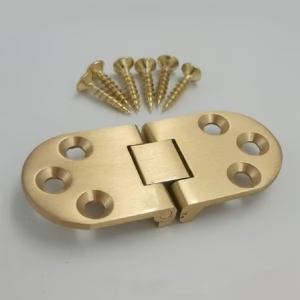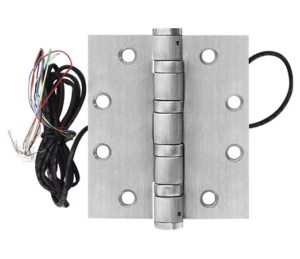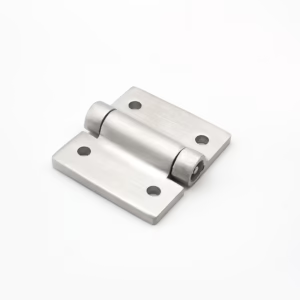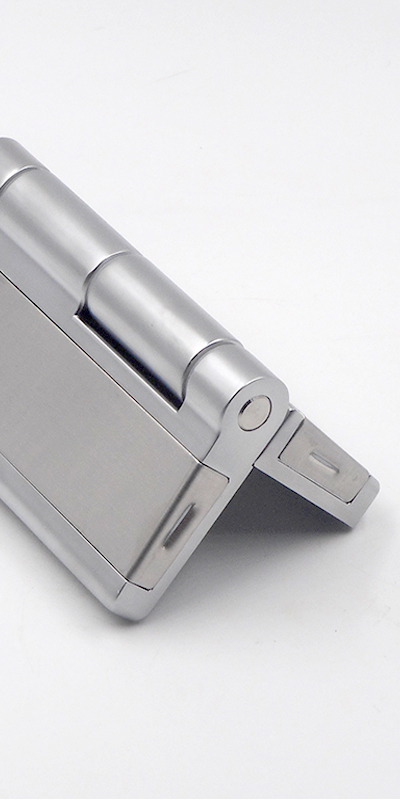Countersunk mounting holes allow hinge fasteners to sit flush, providing better aesthetics and safer performance in industrial applications.
Countersunk mounting holes are cone-shaped recesses that allow flat-head screws to sit flush with the hinge surface. They are essential in industrial hinges to prevent snagging, enable precise alignment, and improve the overall appearance of mechanical assemblies.
This small design detail plays a major role in improving the safety, performance, and durability of industrial hinges.
What Is a Countersunk Hole?
Countersunk holes are specially machined holes with a cone-shaped recess that allows flat-head screws or bolts to sit flush or below the surface of the surrounding material.
A countersunk hole is a conical recess around a hole, designed to accommodate a screw so that it sits flush with the surface. This design ensures smooth finishes, especially important for hinges used in visible or high-contact areas.
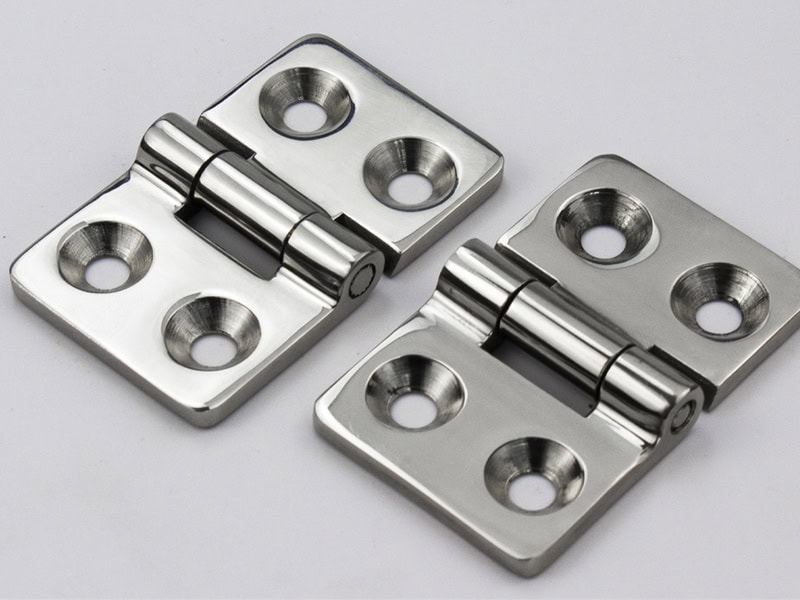
Understanding the Structure and Geometry of Countersunk Holes
Countersunk holes are typically machined at standard angles, such as 82°, 90°, or 100°, depending on regional standards (ANSI, ISO, DIN). These angles correspond to common flat-head screw designs. The main parameters that define a countersunk hole are the overall diameter of the conical section and its depth.
In industrial applications—like cold storage room hinges or trailer door hinges—the flush fit of a countersunk fastener ensures a streamlined profile that prevents interference with nearby components or surfaces. Additionally, it reduces the chances of dirt accumulation and mechanical wear, which is critical in harsh environments.
The Functional Purpose of Countersinking in Industrial Hinges
Countersinking in hinges is not just about appearance—it also has practical implications for safety and functionality in industrial equipment.
The primary purpose of countersinking in hinges is to ensure flush mounting of fasteners, which prevents snagging, enhances safety, and ensures accurate part alignment.
Why Industrial Applications Rely on Countersinking
In an industrial hinge production base, it’s common to see countersunk holes used in heavy machinery panels or electrical enclosures. Flush screw heads prevent interference with adjacent components, especially in tight spaces. When fasteners protrude, they may cause operational issues, snag clothing, or damage sensitive wiring.
Countersinking also assists in maintaining part alignment during hinge installation. For example, butt hinges with countersunk holes ensure precise leaf positioning, preventing misalignment that could affect door or panel function. In environments where equipment is frequently moved or repositioned, such as in climatic test chamber hinges, this kind of mechanical integrity is essential.
Countersunk Hole vs. Counterbore Hole: What’s the Difference?
Though similar in purpose, countersunk and counterbore holes have different shapes and are suited for different fastener types.
A countersunk hole features a conical recess for flat-head screws, while a counterbore hole has a flat-bottomed cylindrical recess for socket-head or hex bolts.
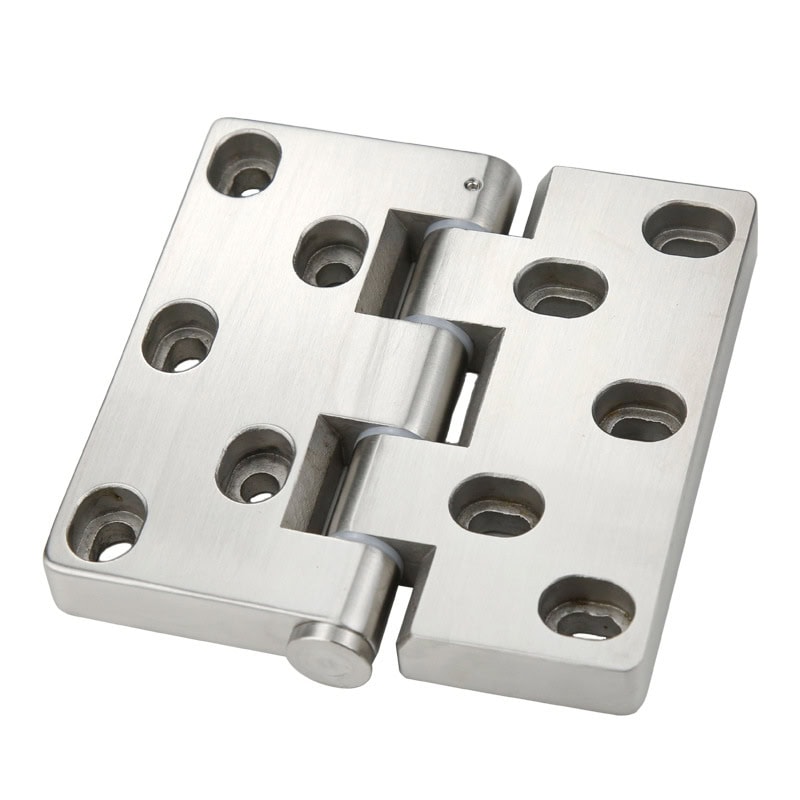
Comparing Fit and Application
Countersunk holes provide a sloped entry, matching the profile of flat-head screws. In contrast, counterbores allow socket head screws to sit below the surface with a flat seating. This distinction impacts both design and manufacturing.
In industrial hinges like marine hinges exposed to outdoor environments, countersunk screws are preferred for their resistance to external snagging and corrosion-prone edges. Counterbore designs, on the other hand, are often used in mechanical equipment where a strong mechanical lock is necessary but aesthetic flushness is not a priority.
| Feature | Countersunk Hole | Counterbore Hole |
|---|---|---|
| Shape | Conical | Cylindrical (flat-bottom) |
| Screw Type | Flat-head | Socket-head |
| Finish | Flush with surface | Recessed below surface |
| Common Usage | Hinges, panels | Machine components |
How Countersunk Holes Improve Aesthetics and Ergonomics
In visible industrial applications, the appearance of fastener heads can impact perceived quality and design intent.
Countersunk holes provide a flush finish that improves the ergonomic feel and visual appeal of industrial assemblies.
Elevating Industrial Design with Subtle Details
When producing high-end products like aluminum hinges or Aluminum Geared Continuous Hinges, a clean surface finish is critical. Countersunk fasteners blend into the hinge leaf, reducing visual clutter. This is particularly important for products integrated into customer-facing equipment, like control panels or stainless-steel enclosures.
Additionally, flush finishes reduce the chance of accidental injury when users interact with the hinge surface. Rounded or protruding fasteners can cause scratches or get caught in gloves or clothing, a hazard in manufacturing or laboratory environments.
Standard Countersink Angles and Dimensions
Standardization of countersink angles ensures compatibility between fasteners and hole geometry.
The most common countersink angles are 82°, 90°, and 100°, which correspond to standard flat-head screws used in industrial applications.
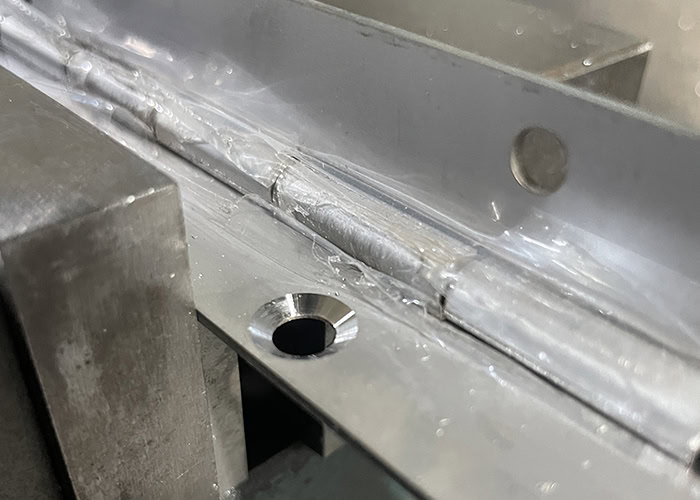
Engineering with Precision
Choosing the correct angle is critical to ensure full seating of the screw head. Inaccurate angles can lead to partial seating, misalignment, or even part damage. For instance, an 82° screw in a 100° countersink will sit too deep, weakening the surrounding material.
Below is a reference chart of standard countersink hole dimensions:
| Screw Size | Standard Angle | Head Diameter (mm) | Countersink Depth (mm) |
|---|---|---|---|
| M3 | 90° | 6.0 | 1.8 |
| M4 | 90° | 8.0 | 2.5 |
| M5 | 90° | 10.0 | 3.0 |
In industrial design, such as outdoor industrial hinges, correct dimensioning ensures the durability and safety of the equipment over long-term exposure and repeated use.
How to Read Countersunk Hole Symbols in Technical Drawings
Understanding drawing symbols is essential for manufacturers and engineers to correctly machine and inspect countersunk holes.
Countersunk holes are typically denoted by a “⏃” symbol or labeled with parameters such as diameter, depth, and angle (e.g., ⌀10.0 CSK 90°).
Reading the Blueprint Correctly
On a hinge drawing, a countersunk hole might be labeled like this:
⌀4.2 THRU, ⌀8.5 CSK 90°
This means the through-hole diameter is 4.2 mm, with a countersink of 8.5 mm in diameter at a 90° angle.
For engineers working on detachable hinges or tight-tolerance hinge mechanisms, accurately interpreting such notations ensures part functionality. Misreading or omitting angle information can lead to costly rework or part failure during assembly.
Conclusion
Countersunk mounting holes are critical in industrial hinges for secure, safe, and visually clean fastener installation. Their use improves both mechanical reliability and design precision in industrial products.

